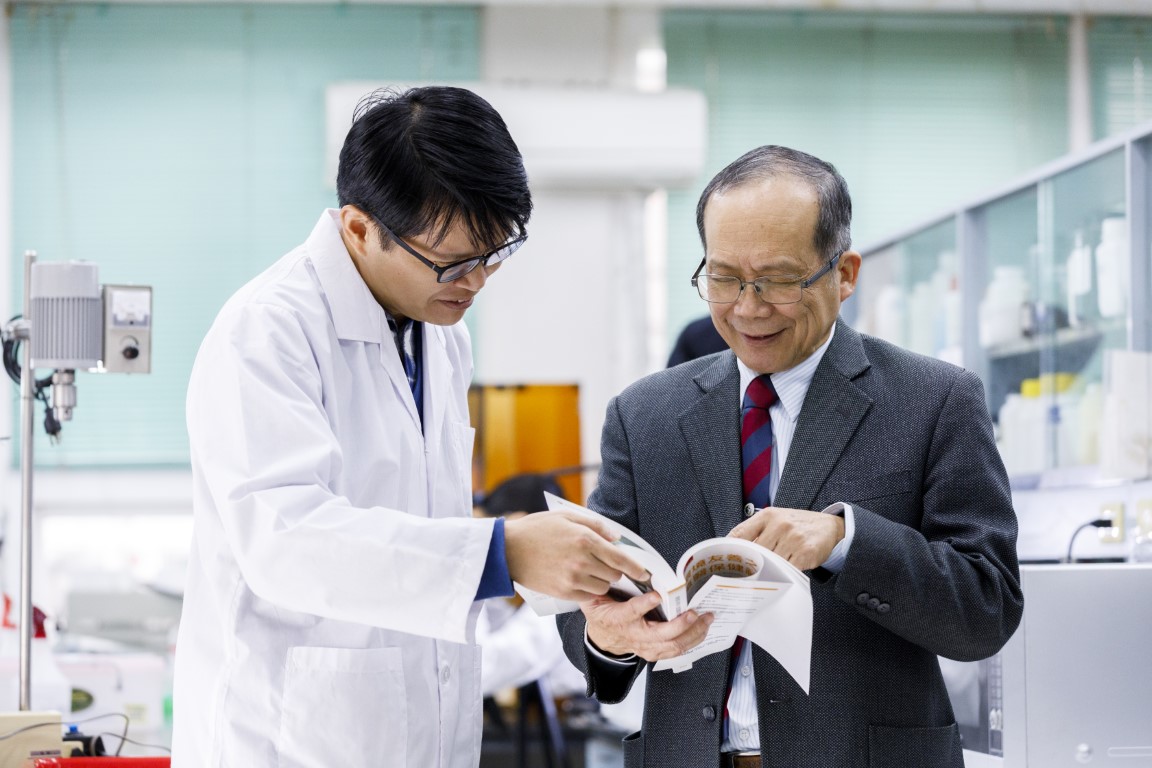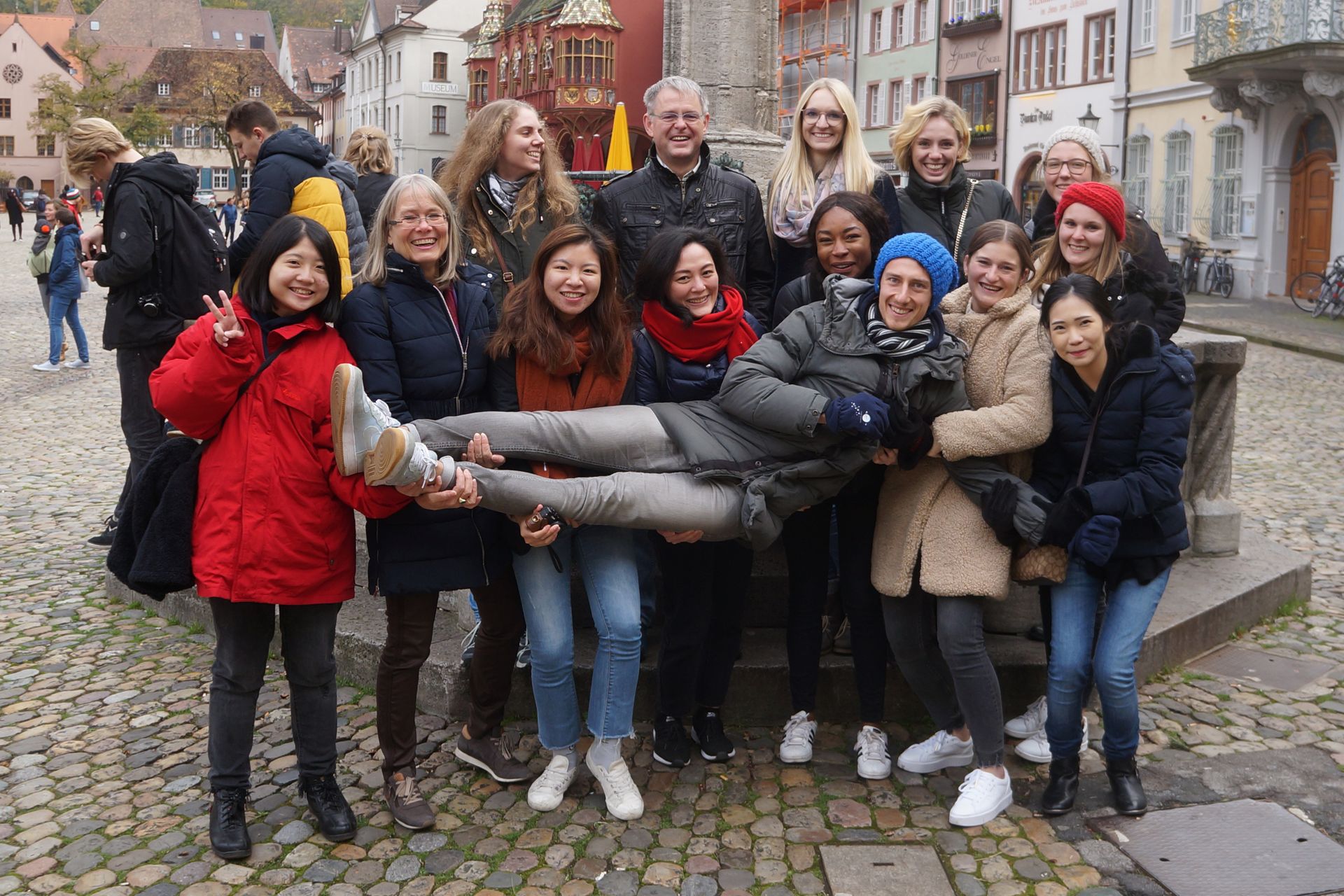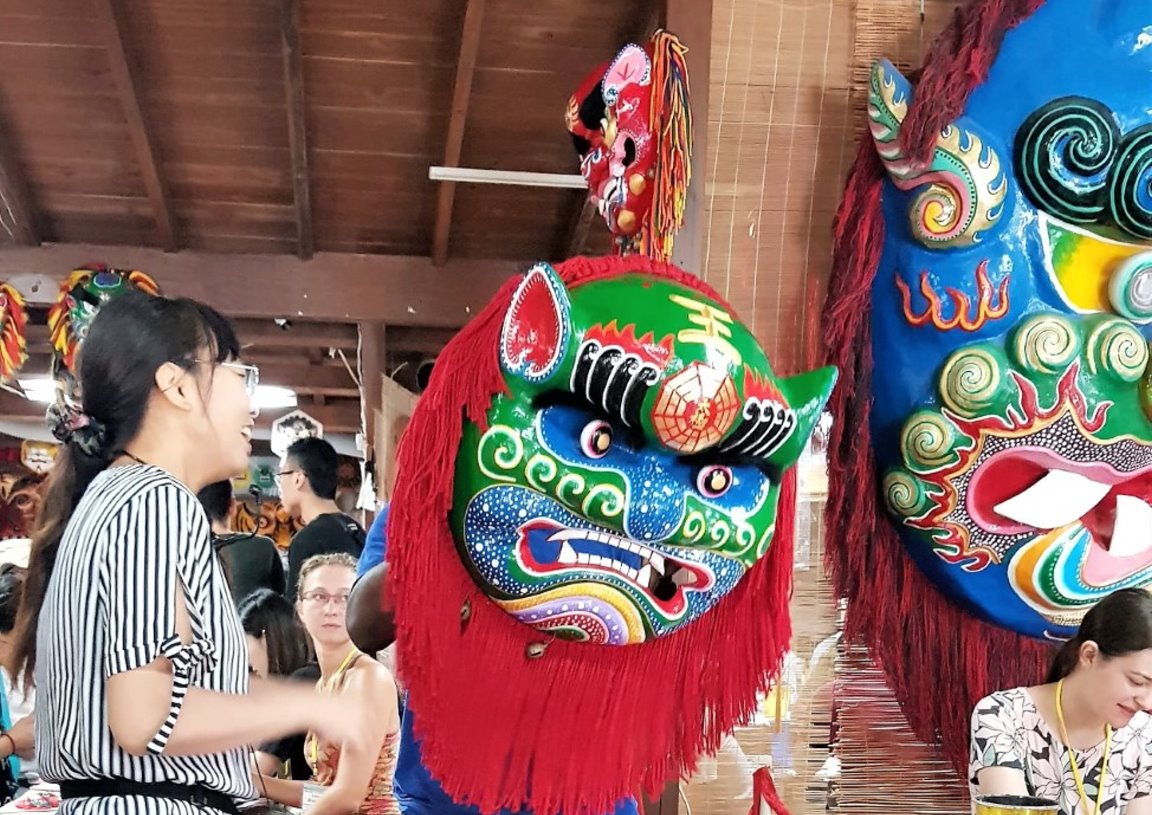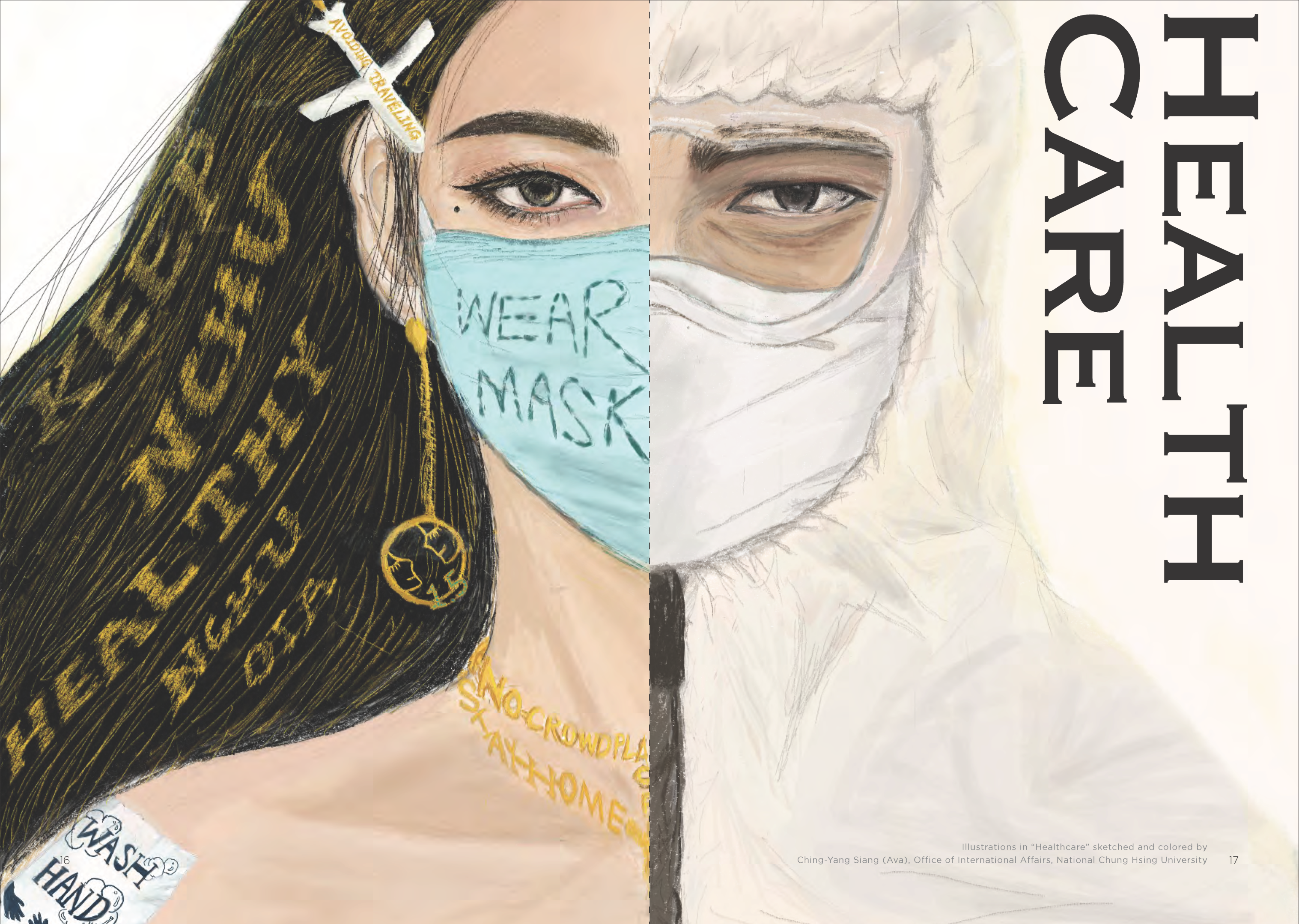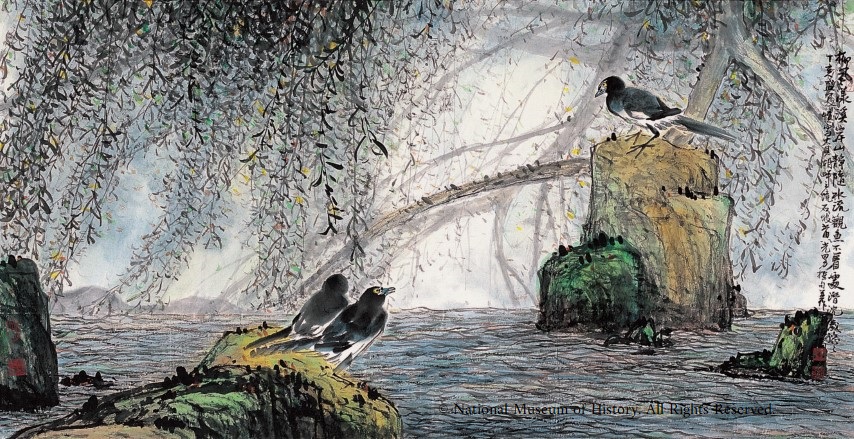(Photo source: VP Prof. Chang-Hsien Yang, National Chung Hsing University)
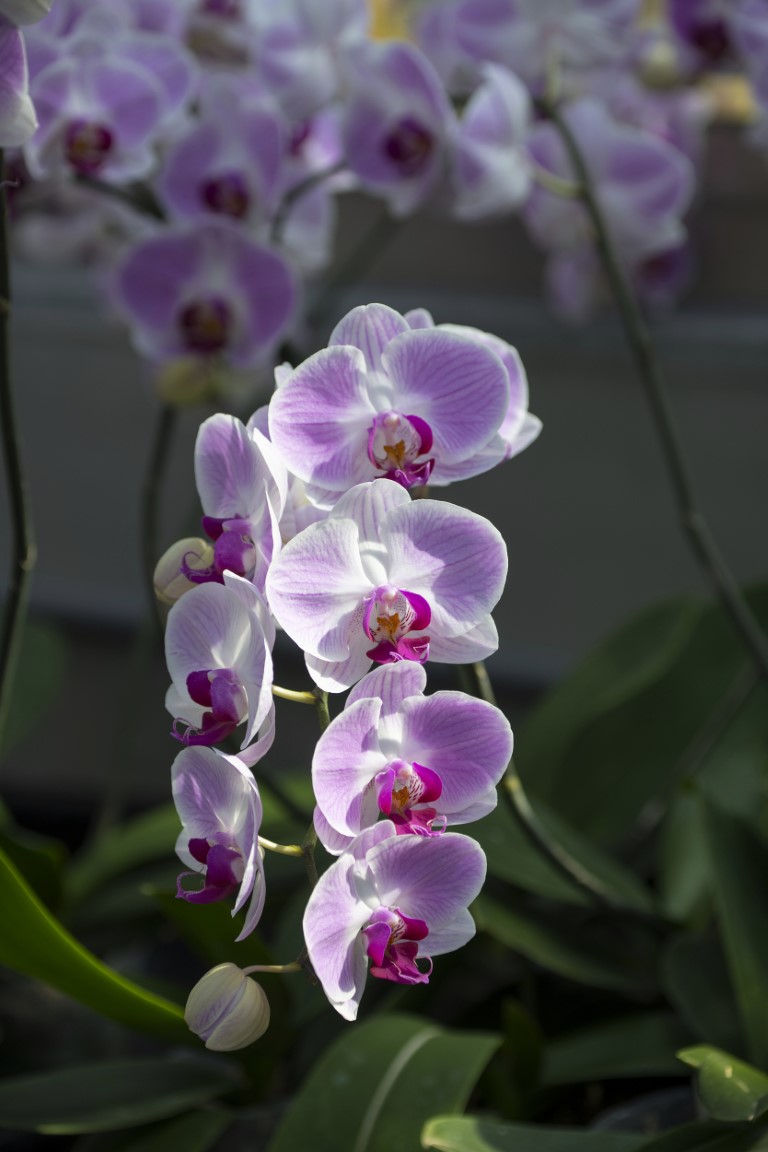
The team led by Chair Professor/Vice President Chang-Hsien Yang, Graduate Institute of Biotechnology, National Chung Hsing University, proposed the "perianth code" (referred to as the P code) five years ago, which identified the mechanism controlling orchid lip formation. Recently, the team further discovered that the B and AGL6 MADS genes in the SP and L complexes of the "perianth code", in addition to their original important functions of determining the identity of the lip/sepal/petal in the floral organs, also have the multiple new functions of regulating the flower color, sepal and petal senescence, and pedicel abscission. The results of this research have been published online on February 10th in Nature Communications, a series journal of Nature.
Under the guidance of Chang-Hsien Yang, this research was performed in the National Chung Hsing University by post-doctoral researchers Hsing-Fen Hsu, Wei-Han Chen, Wei-Han Hsu, Wan-Ting Mao, and master student Yi-Hsuan Shen. This research achievement is solely completed by the research team of National Chung Hsing University.
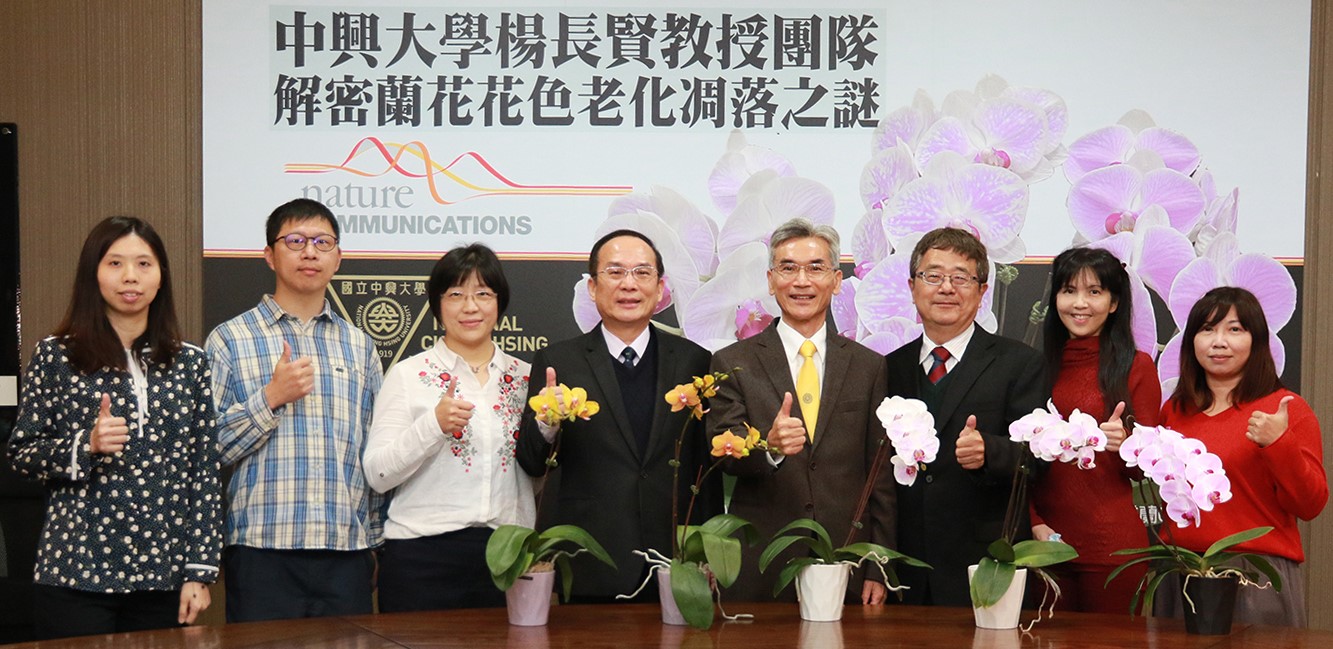
Source: Chair Professor/Vice President Chang-Hsien Yang, Graduate Institute of Biotechnology
The team found that OAGL6-1/OAP3-1/OPI of the SP complex can not only regulate the formation of flower organs but also can further control the number of anthocyanins and the color of the flowers by regulating the expression of PaMYB12 gene. When the expression of OAGL6-1, OAP3-1, or OPI was suppressed by the VIGS strategy, the expression of PaMYB12 and the amount of anthocyanin decreased, resulting in the significant reduction of the flower color.
In addition, it was found that OAP3-1/OPI of the SP complex not only regulates the formation and color of the sepal/petal but also further regulates the senescence of the sepal and petals by inhibiting the expression of the ethylene downstream genes and senescence-associated genes. When the expression of OAP3-1 or OPI was suppressed by the VIGS strategy, the expression of PeEDF1/2 and PeSAG39 was up-regulated, resulted in the early senescence of the flower organs.
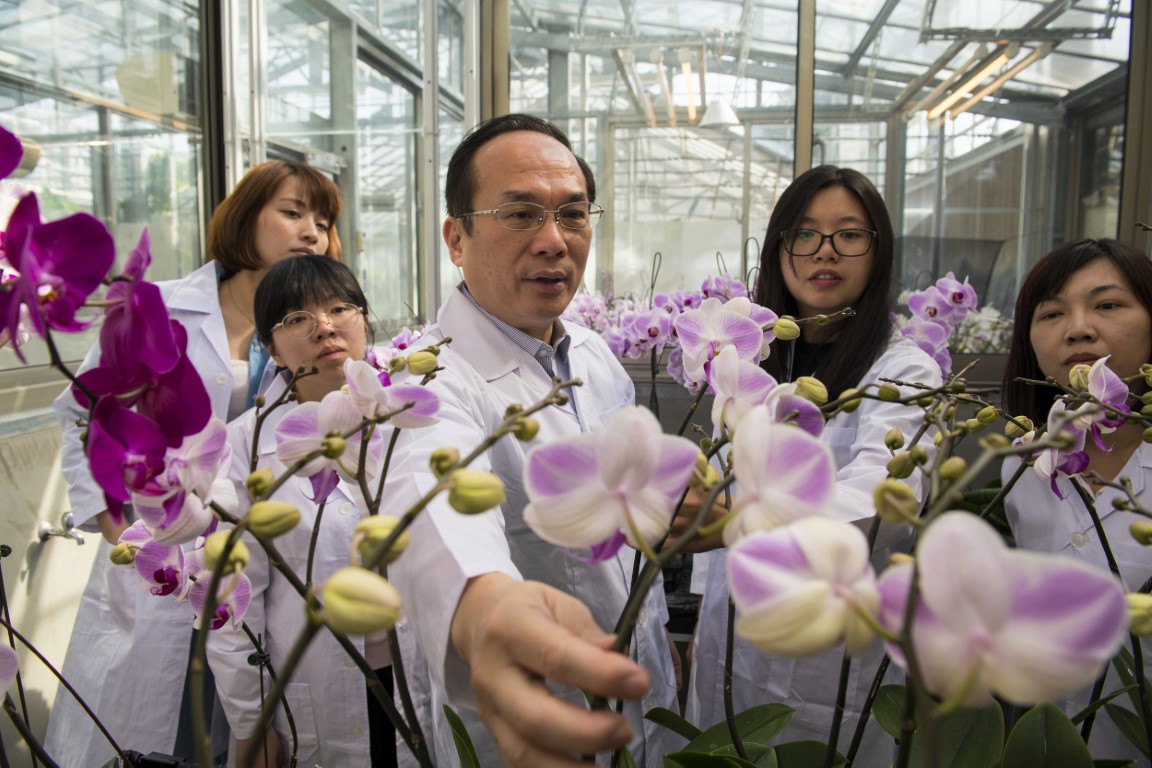
(Photo source: VP Prof. Chang-Hsien Yang, National Chung Hsing University)
Furthermore, the team also unexpectedly discovered that OAGL6-1 of the SP complex not only regulates the formation and color of the sepal/petal but also regulates the expression of lignin biosynthesis genes in the pedicel and the lignification of the base of the pedicel, thereby controlling the abscission of the flower pedicel. When the expression of OAGL6-1 was suppressed by the VIGS strategy, the expression of PeVND1, PeMYB46, and PeMYB63/85 was up-regulated, resulted in the abolishment of the abscission of the pedicel.
These innovative achievements in the function of Plant B and AGL6 MADS box are the first discoveries in the field of flower development. They have made breakthrough contributions in the field of international flower research. The results were published by the top international journal Nature in January 2021. These novel findings were published in Nature Communications, and significantly enhanced Taiwan's international leading status and visibility in orchid flower research.
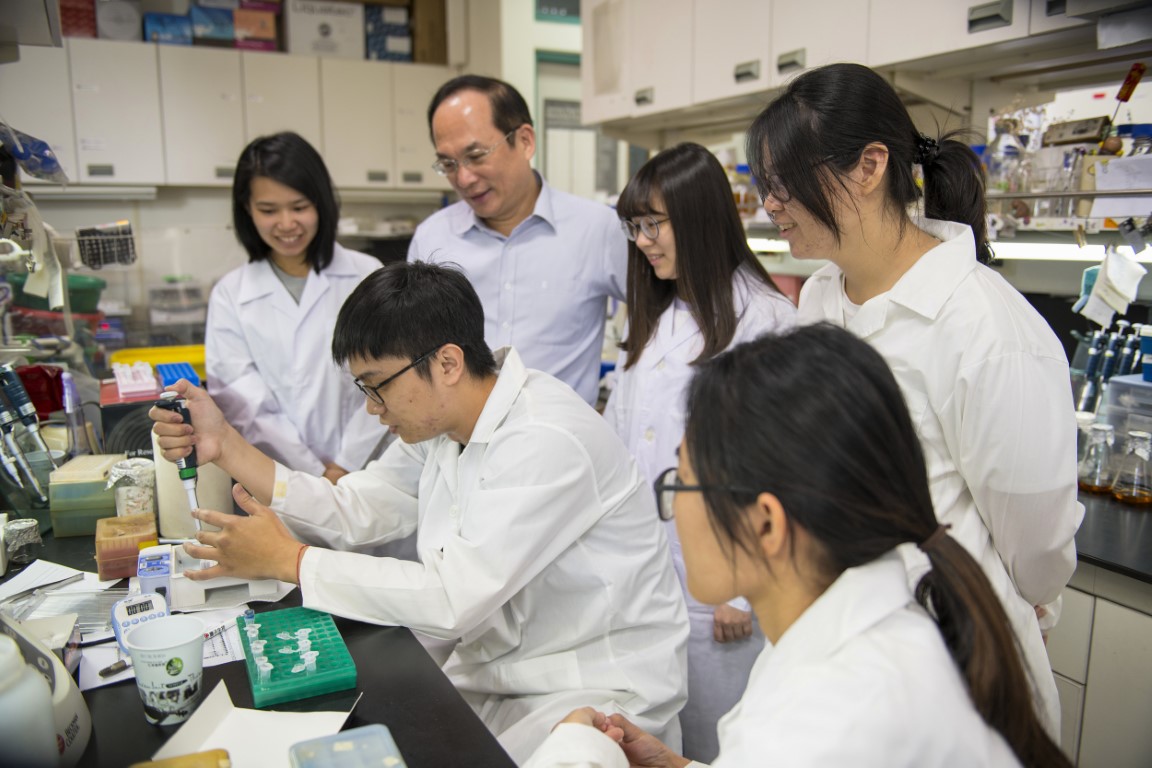
(Photo source: VP Prof. Chang-Hsien Yang, National Chung Hsing University)
In the future, biotechnology and breeding methods can be applied to manipulate the expression of L and SP complex genes. It is expected that orchid flowers with variable colors and a prolonged flowering period will be produced, which will surely increase the diversity of the orchid flower market and the output value of Taiwan’s flowers.
Finally, Professor Chang-Hsien Yang expressed their appreciation for the funding of the Ministry of Science and Technology and the Ministry of Education's featured areas research centers of "Higher Education Sprout Project". With the long-term support of basic research from the nation, it will eventually blossom, he said.
Paper link: https://doi.org/10.1038/s41467-021-21229-w

